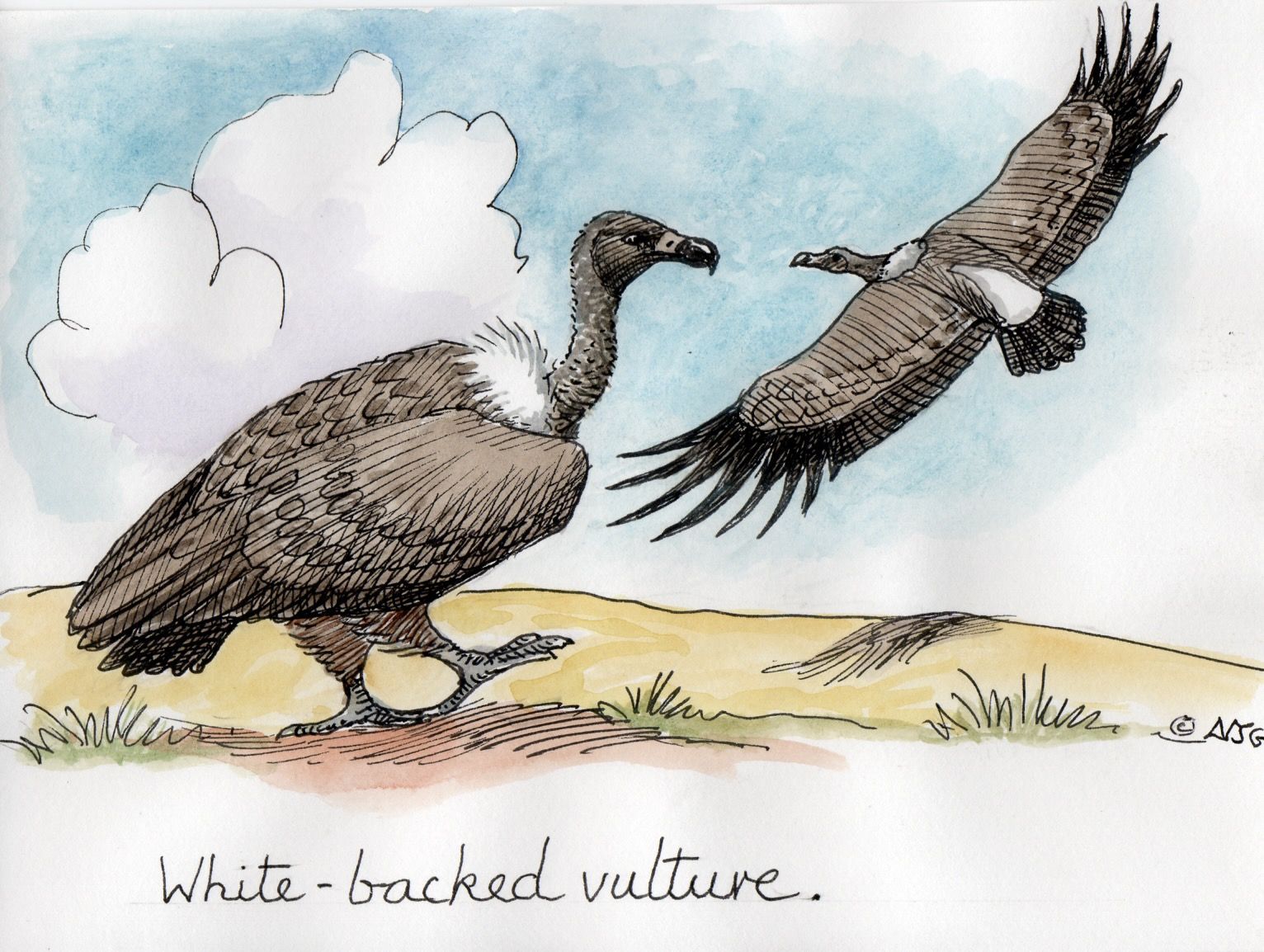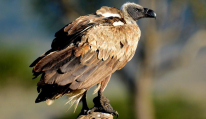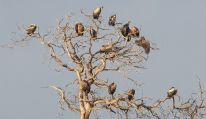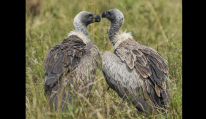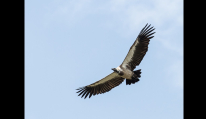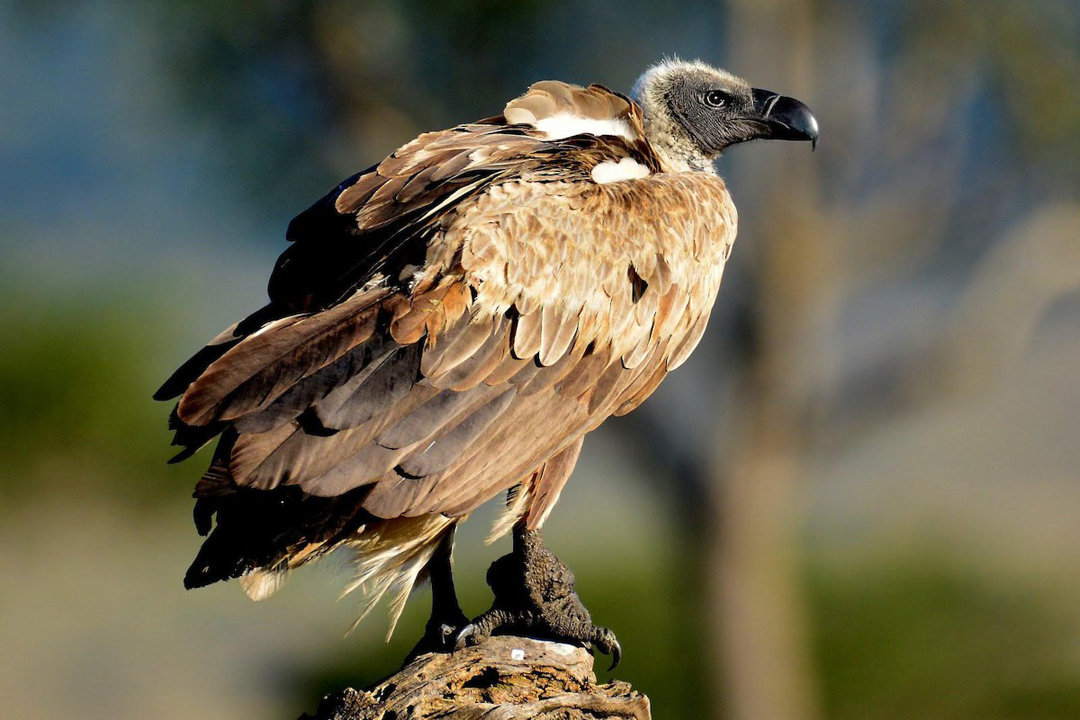Social Structure
White-backed vultures soar through the sky in groups searching for carrion or other signs that food is nearby. Gregarious and aggressive feeders, they also can be subordinate to larger vultures; after feeding, they bathe with other birds.
Communication
White-backed vultures can be heard cackling at their nests, but otherwise are usually silent, except when feeding.
Behavior
White-backed vultures usually associate with large mammals and feed on their carcasses; one expert observed a hundred of them stripping a 50-kg carcass in three minutes. After a carcass is found, the birds may wait nearby for awhile before beginning to feed.
Conservation
Critically endangered
Diet
A scavenger that feeds on abandoned prey or carcasses, white-backed vultures primarily consume carrion, but they have also been known to hunt young springbok, warthogs, and chicks.
Breeding
Nesting singly or with others, monogamous white-backed vulture pairs construct large platform nests of sticks and usually have only one egg per nesting season. Both parents incubate the egg and tend to the chick after it hatches, and chicks generally fledge around three months after hatching.
Friends & Foes
Sharp population declines have resulted from land use changes. They have also suffered from intentional poisoning by poachers and poisoning when they consume carrion contaminated with pesticides.
Population in Kenya
Massive population declines were observed between 1976 and 2005.
Range & Habitat
White-backed vultures are found throughout much of eastern and southern Africa, as well as a belt that runs from coast to coast in sub-Saharan Africa.
They prefer open woodlands and savannas with trees for roosting and nesting, and habitats frequented by large mammals.

